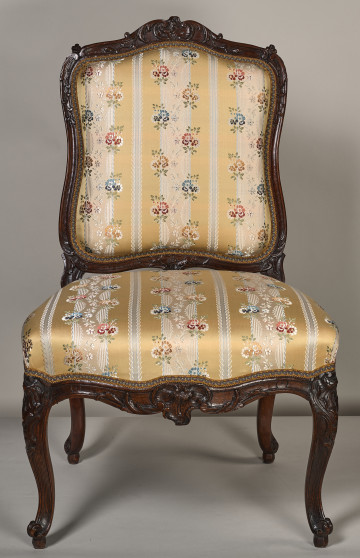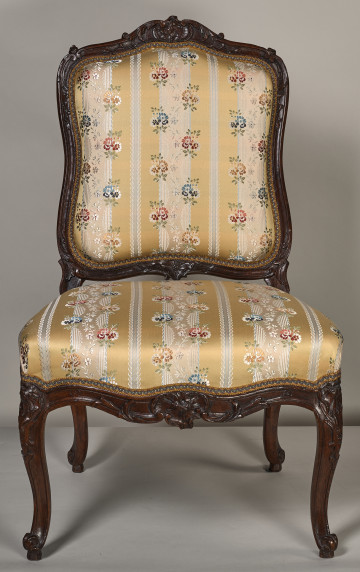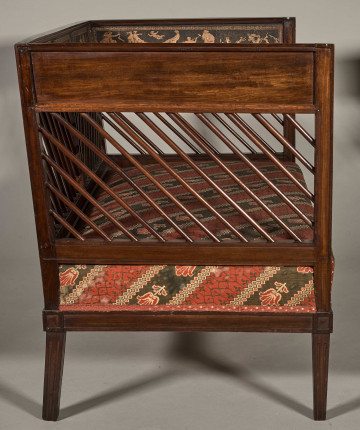
Chair
2nd half of the 18th century
Castle Museum in Łańcut
Part of the collection: Furniture and interior furnishings
Screen with Seats A screen is one of the most practical mobile items of interior design of residential premises. Usually, it comprises several panels joined by hinges and plays the role of a movable wall used to separate and block out space. The name of the piece of furniture derives from Italian para vento meaning protection from wind. The French borrowed the term and popularised it as “paravent.” The first screens were constructed in China. In Europe, they probably appeared in the 16th century when the expeditions of explorers and merchants brought about fascination with the Far East. Interest in the broadly understood Orient culture brought a demand for Far Eastern handicraft or its European copies. In Europe, screens enjoyed greatest popularity in the 18th and the 19th century, functioning as convenient items. Their appearance, adjusted to the utility needs and the current European fashion, underwent stylistic transformations. At times, a screen became an experimental piece of furniture, combining diverse aesthetic and utility functions. The presented screen belongs to the group of furniture where twin corner seats were placed between its walls. A high level of execution and the applied materials, mahogany, cloth in the clearance of the wings and the reproductions of female portraits presented at the top, evoke associations of natural elegance and daily comfort, characteristic for English furniture. It cannot be ruled out that this was the screen that surprised the Lviv art historian Józef Piotrowski; in the guidebook devoted to the Łańcut Castle and published in 1933, we can read in the general description of the second floor fitouts: “[...] original English double armchairs with screens in the shape of garden booths.” Teresa Bagińska-Żurawska https://orcid.org/0000-0002-9243-3967
Author / creator
Dimensions
height: 162 cm, width: 49 cm
Object type
Furniture and interior fittings
Technique
installation
Material
wood, velvet, veneer
Creation time / dating
Creation / finding place
Owner
Castle Museum in Łańcut
Identification number
Location / status

2nd half of the 18th century
Castle Museum in Łańcut

2nd half of the 18th century
Castle Museum in Łańcut

19th (?) century
Castle Museum in Łańcut
DISCOVER this TOPIC
Museum of King Jan III's Palace at Wilanów
DISCOVER this PATH
Educational path